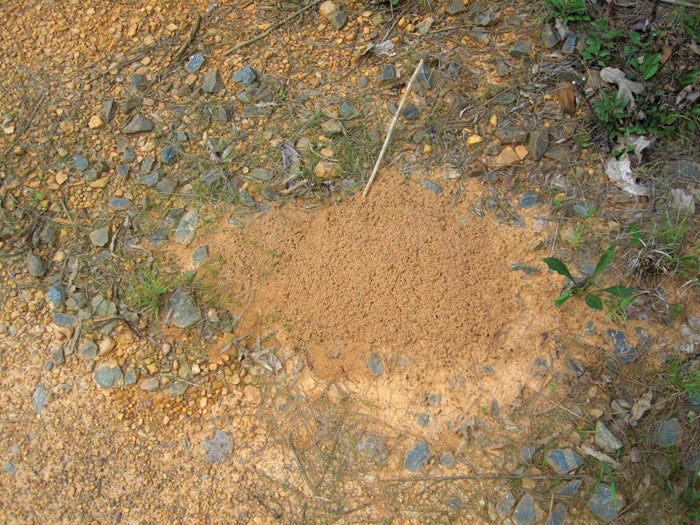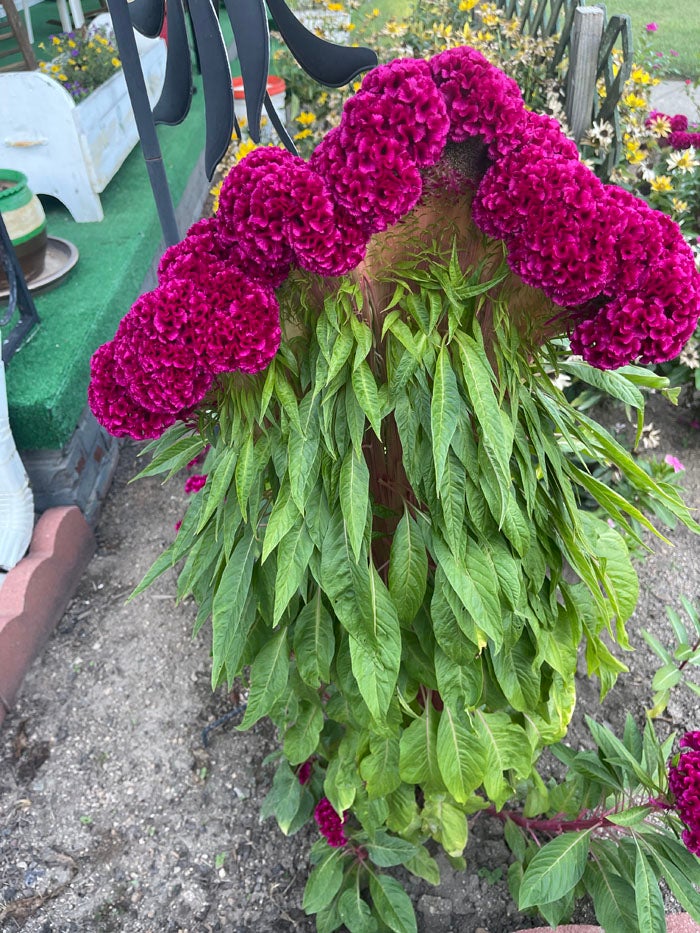Fire ants in the landscape and pasture
Published 12:00 am Friday, July 21, 2017

- Submitted photo A fire ant mound in a pasture.
By Amy-Lynn Albertson
Rowan County Extension Director
The red imported fire ant is an introduced species from South America that has established itself through most of North Carolina and all of Rowan County.
Fire ants like to nest in open sunny areas, especially in disturbed soil. Open areas are why lawns and pastures are often problem areas with fire ants. In the landscape, there are several practices and design elements you can use to make it less attractive to fire ants.
Planting shade trees will make your landscape less desirable for fire ants and increase habitat diversity. It’s important to realize that not all ants are bad and a diverse habitat encourages competitor ants. There are a number ant species that will attack and kill newly mated fire ant queens. They also raid and kill off small fire ant colonies.
You can encourage native ant predators by creating ideal nesting sites. Small rock or board piles in shaded areas or tall grass areas along landscape edges and the base of tree trunks are great sites for native ants. Purple martins are birds that eat insects. Although the impact of this predator on fire ants is not documented, it should have a positive impact on swarming reproductive male and females. Placing purple martin birdhouses in the landscape to provide nesting will encourage the birds to stay.
You can also discourage fire ants in the landscape by keeping garbage cans and pet food bowl clean. Fly larvae in pet poop serve as food for fire ants. You can avoid this problem by removing and throwing away the excrement. Fire ants need water daily. To limit fire ant nesting, conserve water, fix leaky faucets, irrigation valves and heads, improve drainage and practice water-wise landscaping techniques.
None of these practices are going to eliminate fire ant colonies, but they may help reduce the number of ants and the amount of insecticides and baits needed to manage fire ants in the landscape.
This spring and summer we have received some calls about fire ants in pastures with horses and cattle. In the pasture, fire ants are a little more challenging and sometimes expensive to manage.
In cattle operations, imported fire ants injure or kill newborn calves by stinging soft, moist tissues including the eyes. Calves that have been attacked by fire ants will lick ants from their skin and cause an anaphylactic reaction.
In other species, such as quail and prairie chickens, fire ant stings to young birds seem to be more of a factor than egg predation. Stinging debilitates the young birds to the point that they cannot keep up with the mother bird, thus reducing the young bird’s chance of survival.
In horses the threat of fire ants to healthy adults is minimal, but it can be significant to a newborn foal if they lie down or are born near an ant mound.
A question you need to ask is “How many fire ant mounds can I live with?” We cannot get rid of all fire ants in a pasture because a new queen will reinfest an area during the warmer months. Single queen colonies of fire ants are very territorial and will attack and kill any new queens entering their territory.
So it’s to your advantage to tolerate a few mounds per acre to make use of natural control. Bait is the most cost effective way to manage fire ants in pastures. In fact, a once per year treatment can reduce fire ant populations by as much as 90 percent and maintain that level of control for less than $6 per acre.
Tuesday, July 25, from 6-8:30 p.m., Rowan County Cooperative Extension will host a seminar on fire ants in the landscape and pasture. Dr. Mike Waldvogel, N.C. State University entomologist, will present the best baits and strategies to manage fire ants in the pasture. I will be discussing fire ant management in the landscape. This seminar is free and open to the public. Please call 704-216-8970 to register.




